Japan is a beautiful and fascinating destination, on the bucket list of many and a favorite of those who have visited it. Thinking of Japan usually brings to mind the beautiful vermillion-accented shrines in Kyoto or the dazzling lights of Tokyo, but there is much more beyond that. In Kyushu, the southernmost of the main islands of the Japanese archipelago, lies Miyazaki Prefecture, where legend says Japan’s founder and first emperor was born; a prefecture still less-known but home to some under-the-radar spots that offer the chance of seeking a deeper side of Japan.
In the central region along the coast of this prefecture is the town of Takanabe. Located 40 minutes by train from the capital, Takanabe is the smallest town by area in the prefecture, but it is home to many national and prefectural government branch offices due to its central location and ease of access via rail and highways. Because of this, Takanabe boasts the second highest population density in the prefecture behind Miyazaki city. Within Takanabe’s small 43.8㎢ area you will find historically significant places such as a moat that was the main defense for a castle until 300 years ago and a cluster of traditional-style houses, as well as a quaint nightlife hosted by many local bars and taverns. Journey out from the town center and you can discover ancient burial mounds built in the 3rd to 4th century, the lush green mountainside that surrounds the town and the surfing waves of the ocean on its coastline.
Takanabe has nature, history, culture and unique sights and events, and offers a local experience away from the crowds while still providing convenient access to Miyazaki city. Moreover, from here you could venture further and explore more of Japan’s secrets in greater depth on day trips or overnight trips.
During the Edo Period (1603-1868), Takanabe flourished to become an important castle town in its area, renowned especially for its achievements in education and welfare. Go ahead and discover Takanabe, where you could see the historical memorials of those times while on a bicycle ride, enjoy the sea where surfers from all over Japan gather to compete and practice, stroll through the marshlands and admire its unique fauna and flora, and you cannot miss a visit to the Takanabe Taishi and its 700 exceptional stone statues that enchant with their rustic yet striking expressions.
NATURE AND WILDLIFE
Hiking, walking, trekking
A quiet stroll among endangered species – Takanabe Marshland
Takanabe’s fertile soil provides a rich and diverse agriculture, decorating the outskirts of the town with a colorful carpet of plants that change with the seasons. One of the places where one can feel the richness of Takanabe’s nature is the Takanabe Marshlands (open to the public from late March to late October). Here you can walk along bridges and paths surrounded by hundreds of native species and enjoy the natural life varying throughout the year. There are several walking routes, with the shortest taking about an hour, but even a small stroll provides the opportunity to discover nature and plants unique to this region so may find yourself spending a long time here. If the timing is right, you may even encounter rare sights such as the endangered flower Sagiso in bloom (during August) or the Scarlet dwarf, Japan’s smallest dragonfly (from May to August).
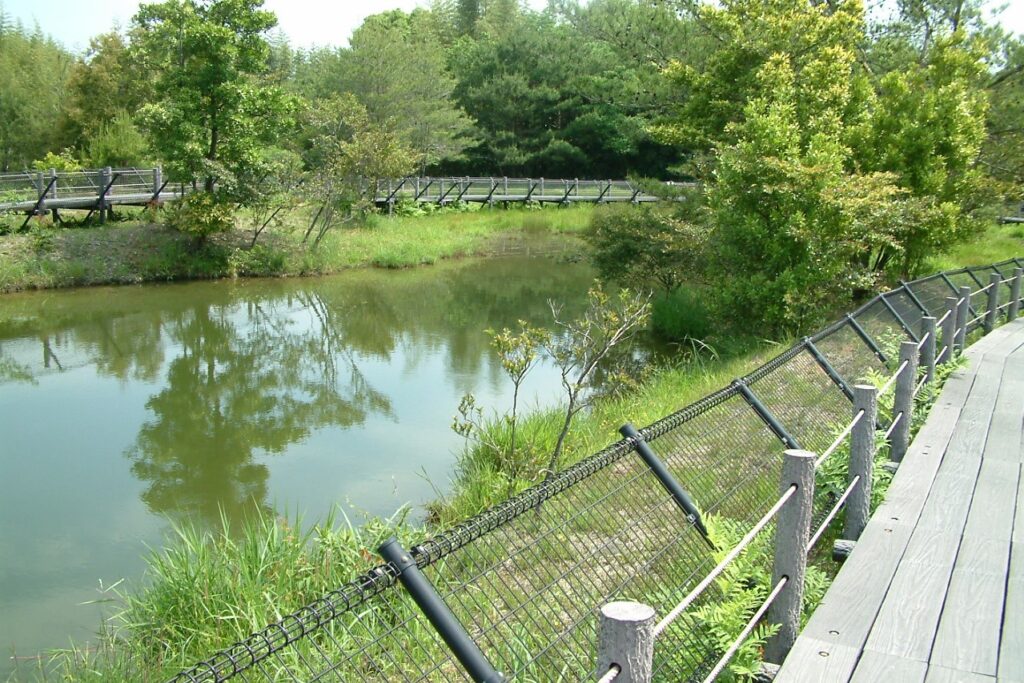
Beach and coasts
Takanabe beach area
Being a seaside town, the ocean also plays an important role. The southern part of Takanabe beach stretches over 10km, where you can find shallow beaches for bathing and swimming as well as highly regarded surfing spots like Kaguchihama beach. There are many surfing spots where beginners to advanced surfers can enjoy, and compared to the beaches of Miyazaki City it is less crowded, providing a more relaxing environment.
Takanabe is also designated a natural monument of Miyazaki Prefecture for being a habitat and nesting ground of loggerhead turtles. During the nesting and hatching period, observation events are held where you may be able to witness these rare sights.
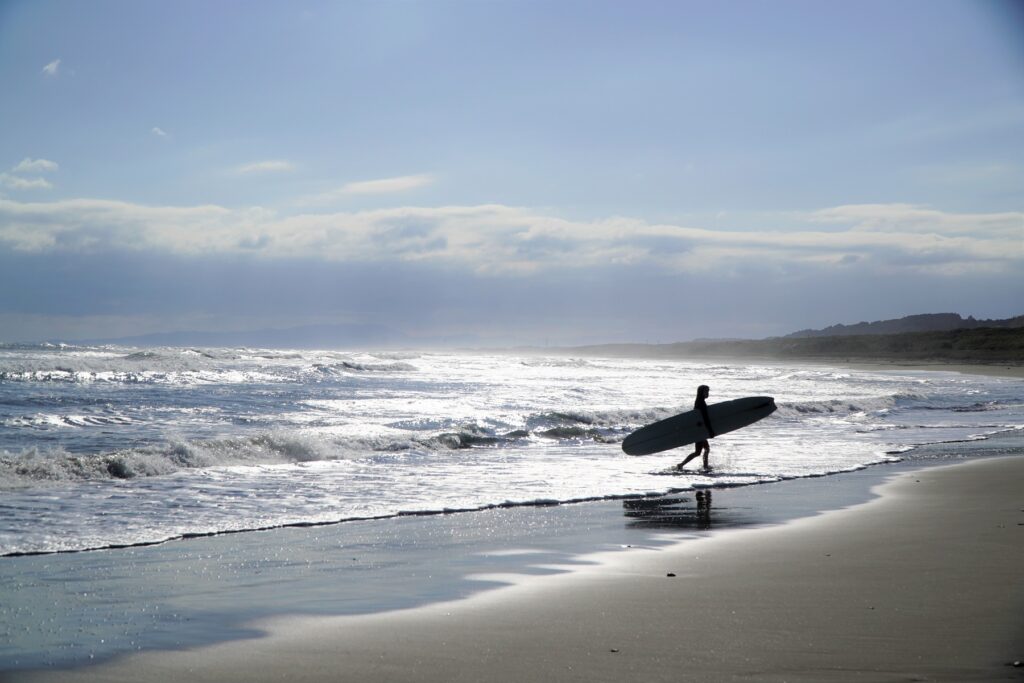
INTO THE HEART OF TRADITIONAL JAPAN (TEMPLES, HISTORIC SITES, etc)
Warded by 700 deities – Takanabe Taishi
According to excavated artifacts found in Takanabe, human settlement in the area dates back to the 3rd century B.C.. A current reminder of these ancient cultures is the Mochida burial mounds, a group of mounds designated as a National Historic Site where prominent people were buried from the 4th to 6th century.
Due to a rise in looting of these burial mounds in the early 1900s, a man by the name of Iwaoka Yasukuchi decided to honor and appease the souls resting there, quitting his job as a successful rice merchant to teach himself how to carve and devoting his life from 1928 for over 40 years to create approximately 700 stone statues of Buddhist and Shinto deities in a hill nearby the burial mounds, a spot which would later be called Takanabe Taishi. Each of these statues, some small and others over 6 and 7 meters tall, all unique and memorable, with their almost-childish charm create a scenery unparalleled to other.
Standing on the top of this hill, if you face towards the town along with the statues, you can see the many fields on the outer edge of the town and the urban area stretching out to the sea.
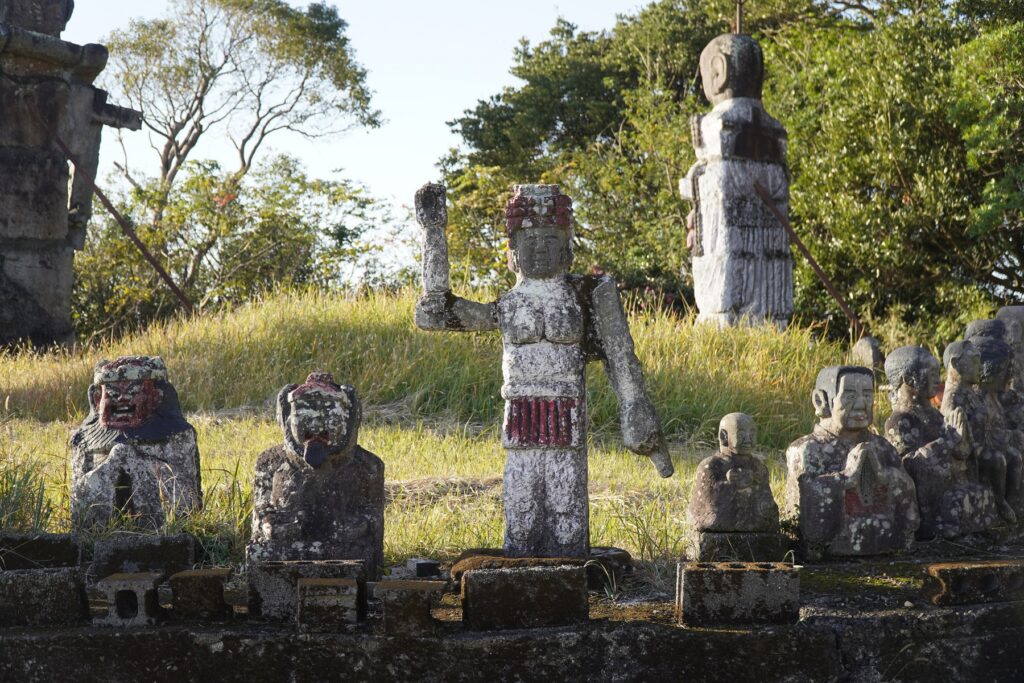
Takanabe town center (Takanabe)
Waking within the town, visiting Takanabe’s historical sites makes for a pleasant stroll. In the center of the town you can find places related to the Meirindo, a school established by the Takanabe clan in 1778 that was notable because of its high standards and its aim of making education inclusive by being open to all townspeople. In 1871 the Takanabe clan was abolished, resulting in the school being closed the following year. The school building doesn’t exist anymore, but the book collection of the Meirindo and its vault crafted in the dozo-zukuri (earthen-walled) style can be found on the premises of the town’s public library. It is also possible to visit the houses and statues of some of its many notable students, like Ishii Juji, the pioneer of child welfare in Japan who founded the first orphanage in the country, or Suzuki Masaya, president of the financial and industrial corporation Sumitomo.
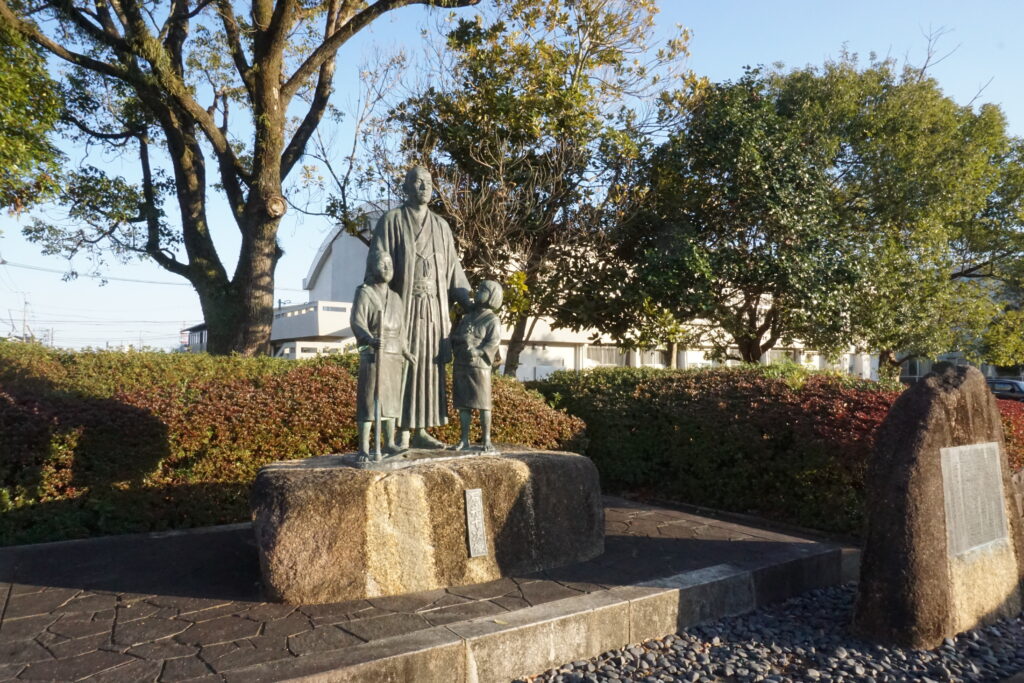
Also in the town center is Maizuru Park, where Takanabe castle once stood. The castle itself was destroyed after the clan abolition in 1871, but the foundation stones and its moat (the only water-filled moat in the prefecture) still remain in their original condition. While climbing the stone stairs towards the top of the hill where the castle was located, you can see the small Takanabe Gokoku Shrine, the graves of the former lord of the Akizuki family, the remaining stone walls from the castle, as well as enjoy the forest greenery on this little walk.
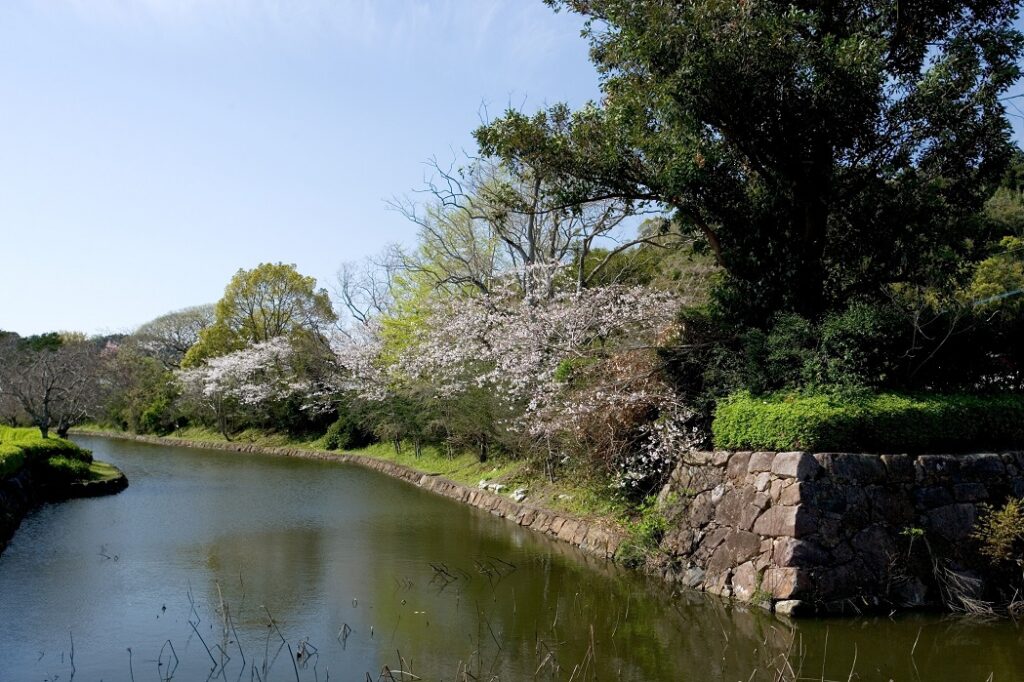
Takanabe’s small size and relatively flat terrain within the town makes it possible to travel around the town by bicycle. Riding a bike through the town center, you can experience the town atmosphere and appreciate its mixture of the new and the old, or you could venture further to the beach for a pleasant ride along the seaside road enjoying the scenery and the sound of the waves. Bicycles can be rented at the Takanabe Tourist Association.
FESTIVALS AND OTHER SEASONAL EVENTS
Takanabe Lantern Festival (Takanabe)
Every year in October the mesmerizing Takanabe Lantern festival is held in memory of Akizuki Taneshige, the founder of Meirindo and 7th lord of the Takanabe clan. For two nights, over 10,000 paper, bamboo and stone lanterns in various sizes and shapes are lit in Maizuru Park, where the Takanabe castle used to be.
At the event, the river of lights in the park is an amazing sight, but equally moving is the community building factor: some of the paper lanterns are made ahead of the event by children from the local schools and on the event days it is the locals and participants who are in charge of lighting up the lanterns. If you arrive early you may have the opportunity to join this special moment.
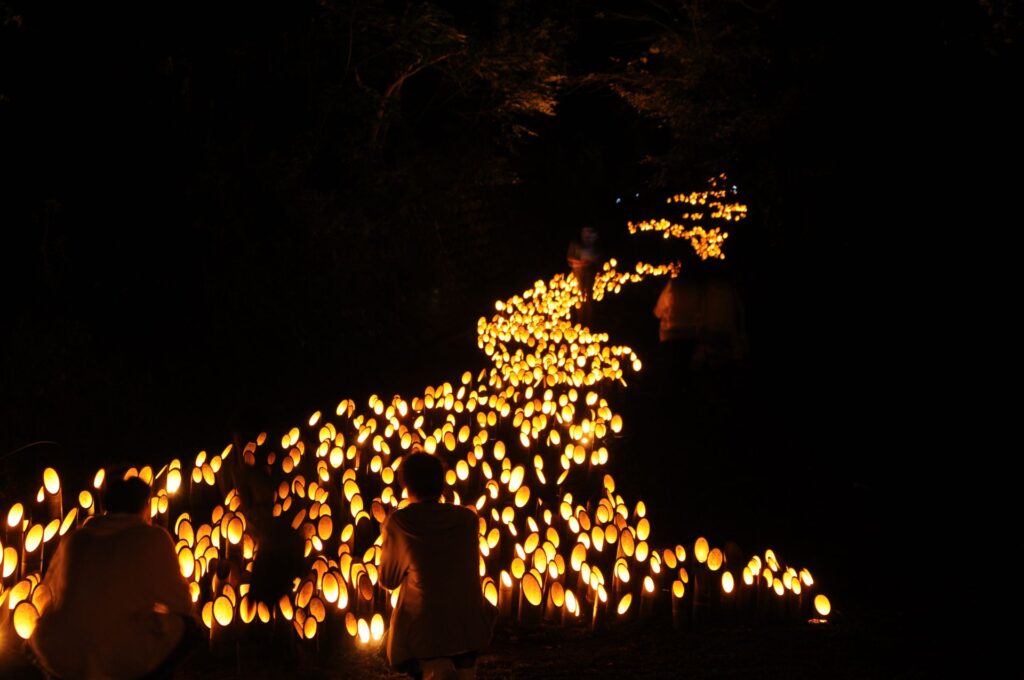
FOOD AND BEVERAGE
A taste of the ocean – Wild oysters (Takanabe)
The sea in Takanabe isn’t only a place to enjoy, it is also the source of delicious food. The wild oysters in Takanabe mature slowly for 3 to 4 years in the intersection of the Omaru River and the Hyuga-nada Sea, where the strong waves make the meat compact and creates small and very flavorful oysters. You can taste these delicious oysters in many spots in town including in shops at the beach like Akiyama Shoten or Takashima.
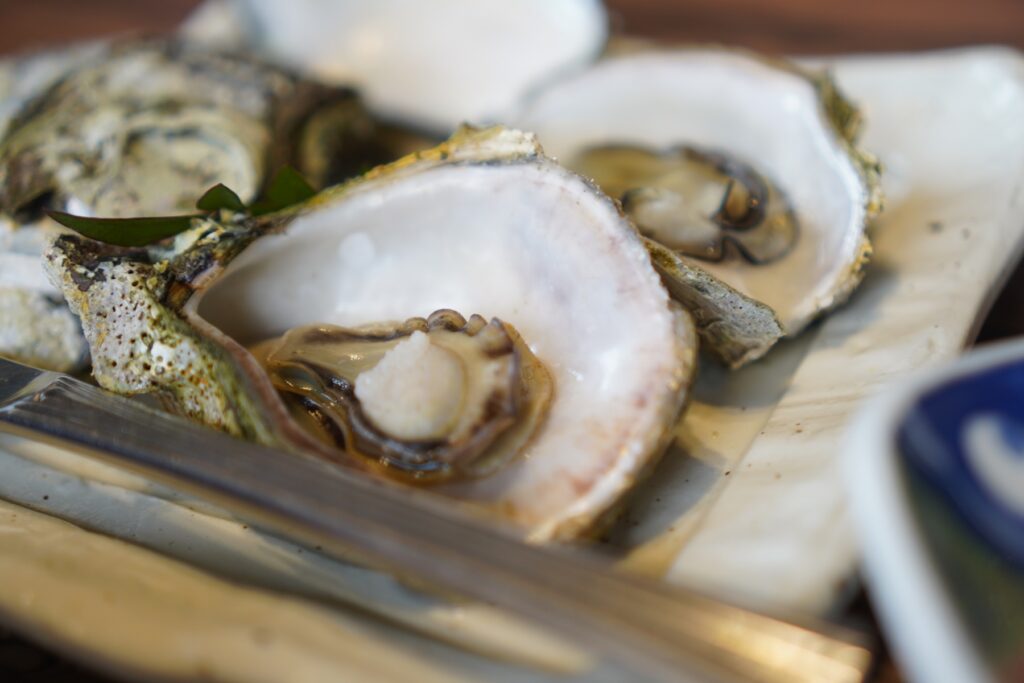
For when you want a drink – Shochu (Takanabe)
Shochu is a traditional Japanese distilled alcoholic beverage made from products like potatoes, wheat, rice, barley, sugarcane, etc. It is one of the most representative alcoholic beverages in Japan and a local speciality in Kyushu. Takanabe is home to the famous shochu brewery Kuroki Honten, which makes numerous rare and valuable shochu. The experience of drinking shochu may be even better when you pair it with Takanabe’s wild oysters or Chinese dumplings(gyoza) made with the delicious local cabbage.
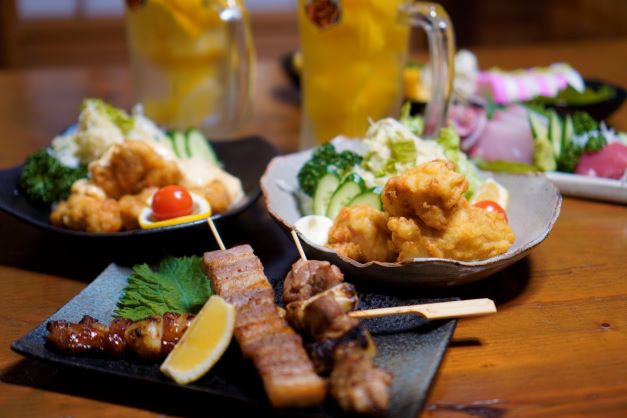
REACHING TAKANABE – ACCESS
Takanabe is located on the southeastern coast of the Kyushu island, facing the Pacific Ocean. You can reach the city by land (rail and road), with the nearest major city being Miyazaki City, 30 minutes away by train.
Direct flights connect the major cities on Japan’s main island (like Tokyo, Osaka, Nagoya) with Miyazaki Airport, and from Miyazaki Airport to Miyazaki City (Miyazaki Station) it takes 12 minutes by train or 20 minutes by car. Because of Takanabe’s location in the central part of Miyazaki Prefecture, it has easy access to other places of interest both in the north (like Hyuga) and the south (like Miyazaki city, Udo shrine, etc.) of Miyazaki.